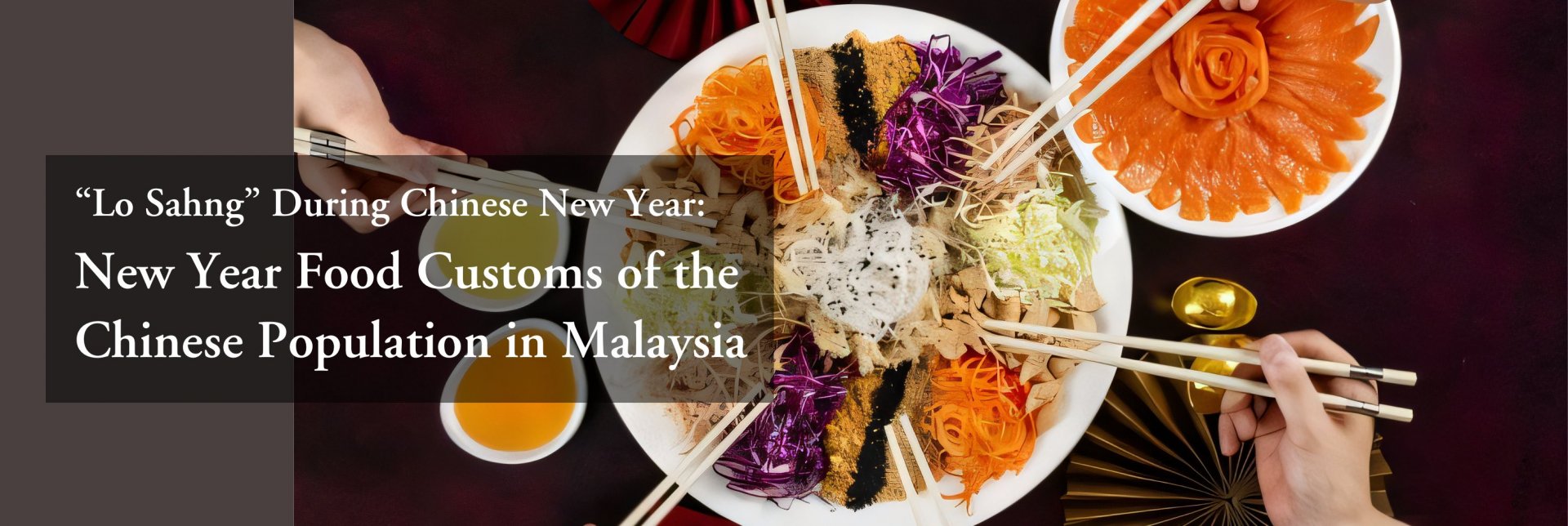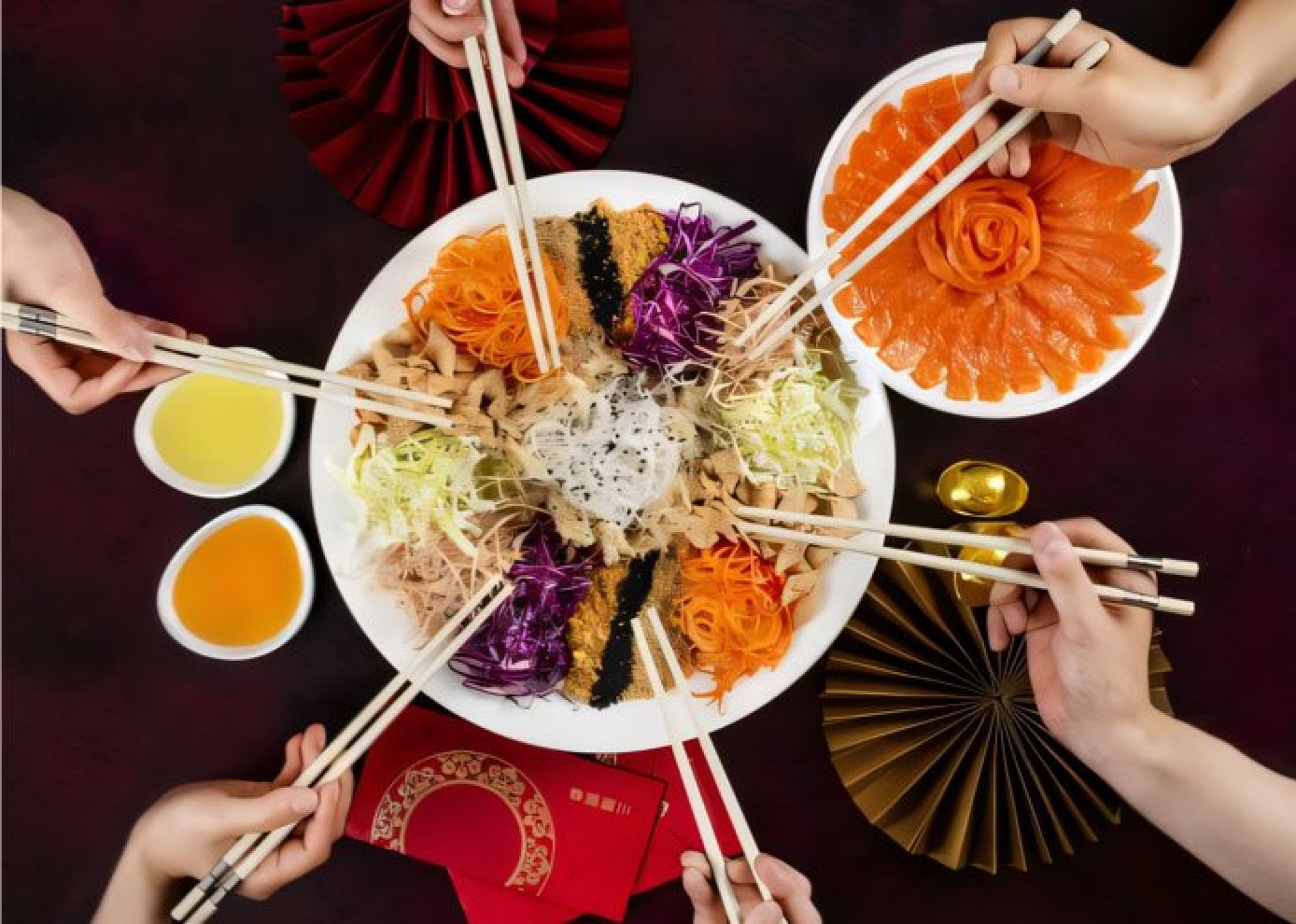“Lo Sahng” During Chinese New Year: New Year Food Customs of the Chinese Population in Malaysia
“Lo Sahng”, also known as Yusheng, yee sang, or Prosperity Toss, is a Cantonese-style raw fish salad consisting of strips of raw fish, served with shredded vegetables and a variety of sauces and condiments during Chinese New Year (CNY), is a popular festival food for the Chinese population in Malaysia. Generally, Chinese restaurants start to serve the “Lo Sahng” dishes from the beginning of the twelfth lunar month all the way till after the Lantern Festival. It’s a must food for the occasion on the tables of all restaurants through the whole first month of lunar calenda. It can be considered as a unique dining culture of the Chinese population in Malaysia that “Lo Sahng” is served for one to two months over the Chinese New Year.
“Lo Sahng” as the CNY food culture didn’t come from nowhere, but has its origin from certain places. It derived from the food custom of the Cantonese on Renri, the seventh day of the first lunar month also taken as the day when human being was created. Since the Chinese population in Malaysia mainly immigrated from Fujian province and Guangdong province, more specifically the population speaking Hokkien, Cantonese, Chaoshan Dialect and Hakka Dialect, who all have their own food culture on Renri.
As a long-celebrated folk form, Renri, the seventh day of CNY is considered the birthday of all human beings, when people eat raw food or prepare vegetables as a part of the celebration. Specifically, the Chaoshan Dialect speaking population prepare “seven vegetable soup”, namely a soup made of seven vegetables, and serve as the food for the occasion on the day. The “seven vegetable soup” is made of some unique vegetable in Chaoshan area, such as mustard, or some vegetables that have special meaning based on their homonym of Chaoshan dialect, such as celery meaning diligence, chives meaning longevity or eternity etc. In modern practice, people often take whatever seven vegetables that can be found available in the market to prepare the soup, which largely continues the tradition of their hometowns.
What the Hokkein mostly do as food culture to celebrate Renri is to eat raw fish, which the seniors often called “eating fresh food” while younger generations are gradually alienated from. The main feature of the “raw fish” or “eating fresh food” is the raw food, including cucumber, yam bean, lettuce, which is mostly fresh uncooked vegetables, while the “fish” is actually boiled sliced jellyfish plus a piece of deep-fried shrimp cracker. Dried toufu was not an essential ingredient in the earlier times. Originally, the Peanut powder was not included either in the dressing but is often added on the top now, which is very much similar to the pasembur sold by the Indian Muslims all year long.

“Fresh Fish” of South of Fujian
The Hakka Dialect speaking population celebrate Renri with their own food culture, called “eating Lei Cha”. Lei Cha, or ground tea, a varying mix of tea leaves, roasted nuts, grains, legumes and seeds, herbs and flavorings, has been integrated into the daily diet of Hakka people and also become widely popular under the influence of maintaining health through special diet. However, some Hakka people still prepare Lei Cha as a special food on Renri to celebrate the tradition of their ancestors.

Lei Cha, Pounded tea - Traditional Hakka food
Lastly, “Lo Sahng”, the food culture of Cantonese speaking population that has gained special evolution, is also one of the native food customs on the seventh day of CNY. It had remained as the festival food custom only to the Cantonese speaking population in the earlier times of Malaysia. However, since the hilarious forms of all diners gathering closely at the table, picking up the dishes and tossing the ingredients with chopsticks while saying “auspicious wishes” is very suitable for the lively atmosphere of the CNY, it has gained wide popularization later and stood out from the various food customs of all the dialect speaking population. Therefore, it has obviously become a common festival celebration of the Chinese population in Malaysia, not only on the seventh day, but throughout the whole month of CNY. Several factors contributed to this establishment. First, since the common dialect among the Chinese population in Klang District, the political and economic center of Malaysia, is Cantonese, the Cantonese culture became the cultural mainstream among the Chinese population in the city and spreads from the center to the whole country. Besides, young people mostly work and live in Klang, a city of migrant workers, and return hometowns with gifts to celebrate holidays and festivals, carrying back the food culture of “Lo Sahng”, which enables the Cantonese culture to overcome the geographical and dialectal barriers and spread to all Chinese population in Malaysia as a dominant culture. Secondly, “Lo Sahng” undoubtedly serves a great chance to heighten the atmosphere in the year-end dinners in the last month of lunar year and group meetings held by all Chinese parties and groups in the first month of CNY. Meanwhile, it is a perfect commercial opportunity for restaurants to cater to the needs of the festival. Therefore, driven by a combination of demand and supply, “Lo Sahng” has flourished all over the places and become a national CNY festival custom for the Chinese population in Malaysia across the places and dialect groups.

All articles/videos are prohibited from reproducing without the permission of the copyright holder.




Welcome to leave a message:
Please Sign In/Sign Up as a member and leave a message